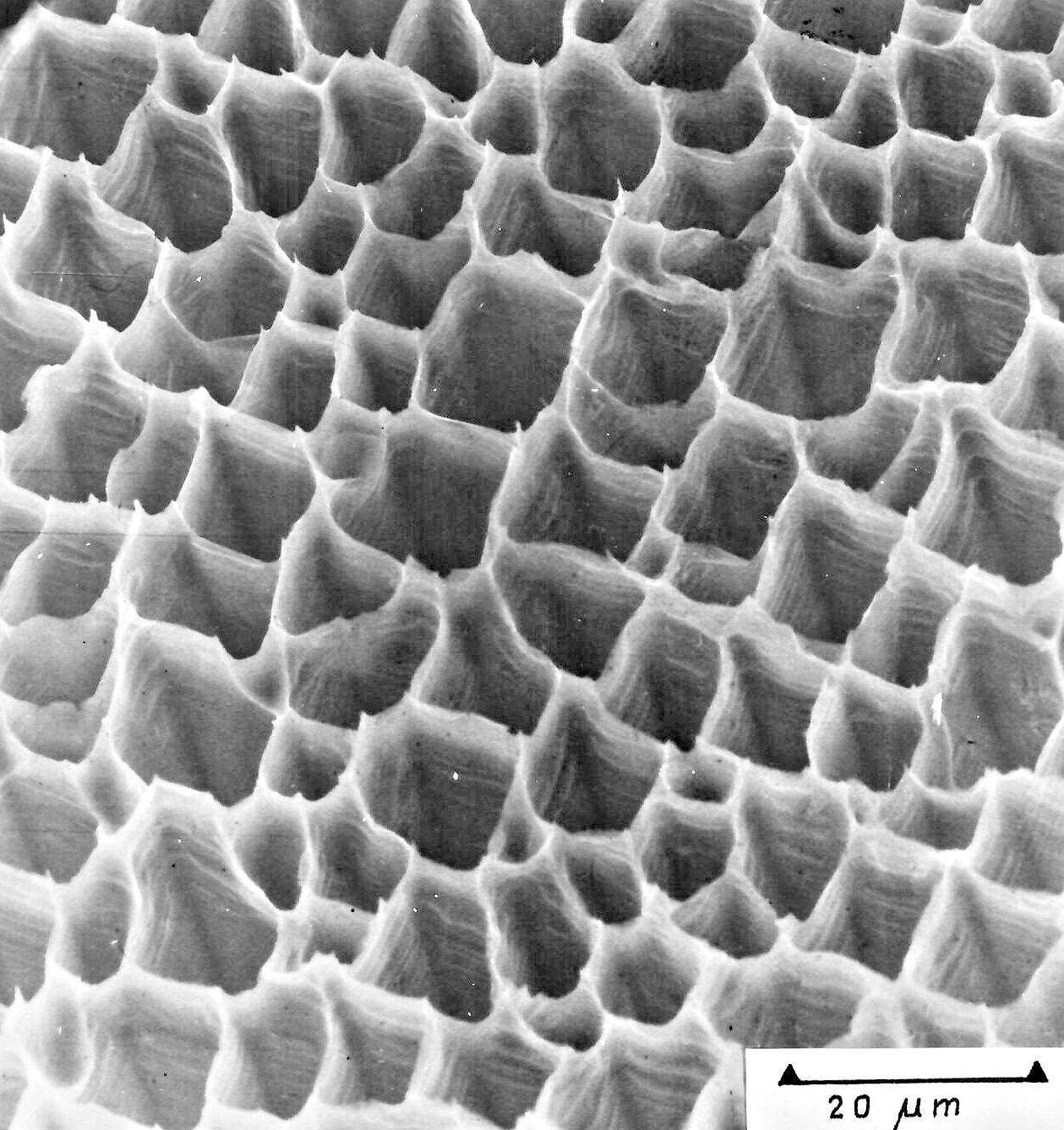5.3 Pore Etching
5.3.1. Introduction
- Self-induced oscillations of the current for a constant potential, or oscillations of the voltage for a constant current
under certain condition. In other words: Some self-induced parameter oscillation in time. In yet other terms: Self-induced
structure formation.
This was the major research topic for years top come - Formation of colorful layers, easily removed, under certain conditions.
In other words: The formation of (luminescent) nanoporous silicon.
We did not know that then but it was to be Volker Lehmann’s claim to fame. - Formation of “black” silicon, identified as silicon looking like this:
 |
| SEM picture of "Black Silicon" |
I came up with an explanation for this kind of pore etching: The bending of the space charge region around some depression would focus the holes generated by the light on the tip of the depression, thus strengthening dissolution at the tip region. Based on this I made a prediction: Illuminate the back side of n-Si with a large diffusion length (comparable to the specimen thickness) and you are going to produce deep pore.
Volker Lehmann went to work. The result was this publication:
Volker Lehmannm however, did even better. After I left Siemens, he spend some time with my very good friend Uli Gösele, then at Duke University, USA: There he encountered the magic word "nanowire" and with his background of investigating those colorful layers on anodized Si, it was all that was needed to produce this publication:
2682 citations! Can't do much better than that as long as your first name is not Albert.
Well - the referee (of course) strongly opposed publication; look it up here. I know about that because Volker was a bit shocked after getting the referee report and asked for my advice.